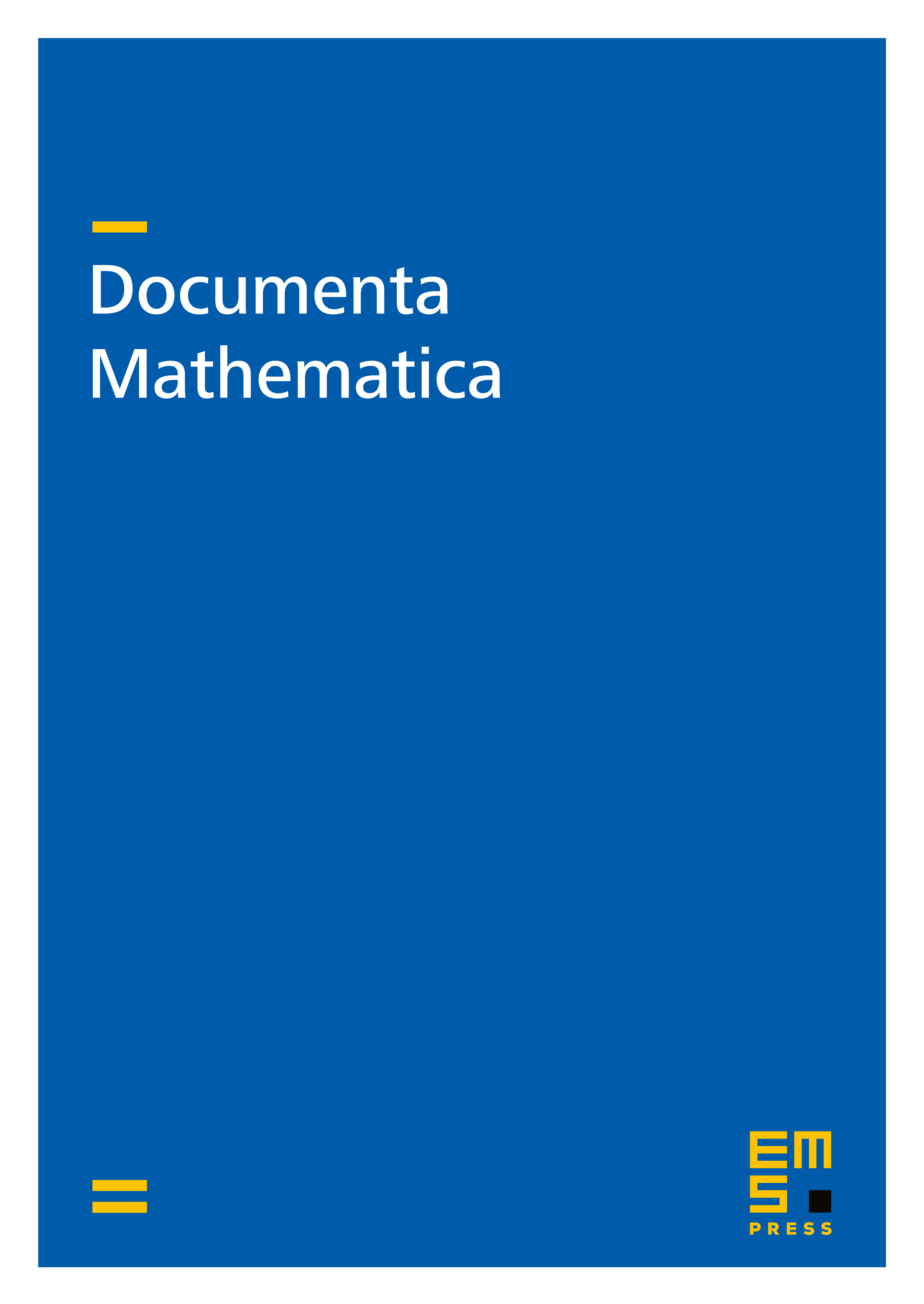Derived categories of coherent sheaves on rational homogeneous manifolds
Christian Böhning

Abstract
One way to reformulate the celebrated theorem of Beilinson is that and are strong complete exceptional sequences in , the bounded derived category of coherent sheaves on . In a series of papers (citeKa1, citeKa2, citeKa3) M. M. Kapranov generalized this result to flag manifolds of type and quadrics. In another direction, Y. Kawamata has recently proven existence of complete exceptional sequences on toric varieties (citeKaw). Starting point of the present work is a conjecture of F. Catanese which says that on every rational homogeneous manifold , where is a connected complex semisimple Lie group and a parabolic subgroup, there should exist a complete strong exceptional poset (cf. def. 2.1.7 (B)) and a bijection of the elements of the poset with the Schubert varieties in such that the partial order on the poset is the order induced by the Bruhat-Chevalley order (cf. conjecture 2.2.1 (A)). An answer to this question would also be of interest with regard to a conjecture of B. Dubrovin (citeDu, conj. 4.2.2) which has its source in considerations concerning a hypothetical mirror partner of a projective variety : There is a complete exceptional sequence in if and only if the quantum cohomology of is generically semisimple (the complete form of the conjecture also makes a prediction about the Gram matrix of such a collection). A proof of this conjecture would also support M. Kontsevich's homological mirror conjecture, one of the most important open problems in applications of complex geometry to physics today (cf. citeKon). The goal of this work will be to provide further evidence for F. Catanese's conjecture, to clarify some aspects of it and to supply new techniques. In section 2 it is shown among other things that the length of every complete exceptional sequence on must be the number of Schubert varieties in and that one can find a complete exceptional sequence on the product of two varieties once one knows such sequences on the single factors, both of which follow from known methods developed by Rudakov, Gorodentsev, Bondal et al. Thus one reduces the problem to the case with simple. Furthermore it is shown that the conjecture holds true for the sequences given by Kapranov for Grassmannians and quadrics. One computes the matrix of the bilinear form on the Grothendieck -group given by the Euler characteristic with respect to the basis formed by the classes of structure sheaves of Schubert varieties in ; this matrix is conjugate to the Gram matrix of a complete exceptional sequence. Section 3 contains a proof of theorem 3.2.7 which gives complete exceptional sequences on quadric bundles over base manifolds on which such sequences are known. This enlarges substantially the class of varieties (in particular rational homogeneous manifolds) on which those sequences are known to exist. In the remainder of section 3 we consider varieties of isotropic flags in a symplectic resp. orthogonal vector space. By a theorem due to Orlov (thm. 3.1.5) one reduces the problem of finding complete exceptional sequences on them to the case of isotropic Grassmannians. For these, theorem 3.3.3 gives generators of the derived category which are homogeneous vector bundles; in special cases those can be used to construct complete exceptional collections. In subsection 3.4 it is shown how one can extend the preceding method to the orthogonal case with the help of theorem 3.2.7. In particular we prove theorem 3.4.1 which gives a generating set for the derived category of coherent sheaves on the Grassmannian of isotropic 3-planes in a 7-dimensional orthogonal vector space. Section 4 is dedicated to providing the geometric motivation of Catanese's conjecture and it contains an alternative approach to the construction of complete exceptional sequences on rational homogeneous manifolds which is based on a theorem of M. Brion (thm. 4.1.1) and cellular resolutions of monomial ideals à la Bayer/Sturmfels. We give a new proof of the theorem of Beilinson on in order to show that this approach might work in general. We also prove theorem 4.2.5 which gives a concrete description of certain functors that have to be investigated in this approach.
Cite this article
Christian Böhning, Derived categories of coherent sheaves on rational homogeneous manifolds. Doc. Math. 11 (2006), pp. 261–331
DOI 10.4171/DM/212